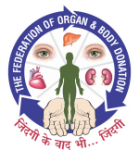Our body is a strange automatic machine.
It has two controlling centers. One is the energy center and the other is the command center. We call the energy center as heart and we call the command center as a brain. Both of these centers control all the activities of our body. There are different parts of our body. Such as hands, feet, head, nose, ears, eyes etc. All these parts of the body are called external organs. Similarly there are different parts inside our body e.g. Liver, stomach, lungs, heart, kidneys, pancreas, etc. All these are internal parts of the body which are called internal organs. Our whole body is a strange machine made up of external organs and internal organs.
When any part of the machine breaks down, the it is replased by a new other part. Spare parts for the machine are bought from the market or from manufacturing companies. Therefore, the damaged part of the machine can be replaced with another part and the machine can be restarted.
But the body is such a strange machine that no part of that machine can be made or manufactured anywhere in any factory or outside the body. The body part is made in the human body and it is available in the body only.
Many years in the history of human beings up to now, if a part of the human body breaks down, the human life either ends or the human being develops a disability or some physical deficiency.
Let us now consider this.
Suppose some organ I need to be made available for my body for my survival. What would happen to my life without it ? And how can I heal an organ and be alive? This is an important question.
A living organ wihich a person can donate to a close relative while he/she is alive.
1) One of the two kidneys.
2) Part of the liver.
3) Part of lung,
4) Part of pancreas,
5) Part of intestine.
6) Uterus
A person’s life can be spent on one kidney. So donating one kidney out of two does not pose any physical risk to donor. In the same way, the other organs which are mentioned above the part of which we can transplant into another body. Which becomes fully functional in both bodies after a certain period of time. Then only the doctors will remove some part of these organs. Therefore, if such an organ is removed from one’s body, there is no possibility of any physical danger to donor in the future life.
Even in a non-accident patient, if there is bleeding in the brain due to brain haemorrhage.
That is, due to any reason, the complete loss of connection of the body with the brain or the brain function stops due to bleeding, Both conditions are called brain death or brain stem death. In common language we can say brain death.
This condition is very important as at this time the patient’s breathing continues artificially when the ventilator is on, even though the brain function is off, so the heart is still functioning. Therefore, the entire body below the neck is likely to feel alive due to blood circulation. A heartbeat can be clearly seen in the chest but if the patient isl brain dead, the patient is 100% certain to die once the ventilator is removed. That is, we can say that brain dead means off life kept artificially on though it certainly is death.
To check whether it is a real death or not, there is a test called Apnea, which is conducted twice by a government appointed committee of four doctors, at an interval of six hours. If the test is positive both times, the patient is declared brain dead by this committee. Brain dead is one hundred percent death.
In such life-like death conditions, all the internal organs of the body below the neck are functioning. In general mechanical terms we can say they are in working condition. Such functioning organs can only be removed from one body and transplanted into another.
This means that if such a patient is on his deathbed in the hospital’s ICU and is declared brain dead by a committee of doctors, then the organs can be available for transplant. But even then the law requires that the heirs of the brain dead patient should give consent for the organ transplant.
Now let us assume that all the above conditions are fulfilled. When in this case, many organs in the body are available for transplant. Doctors decide which organs to transplant after checking if the organs are in proper condition. But in general, if all the organs are in good condition, then mainly the following organs can save the life of a dying patient, so they are called life saving organs, they are mainly as follows: Heart, Lungs, Liver, Pancreas, both Kidneys
But apart from that, intestines, uterus, blood veins, ear drums, heart valves, bones, cartilage, bone marrow, etc., as well as external organs, both eyes, skin, both hands, etc., more than 50 organs and mainly tissues can be useful for tissue transplantation. So if the relatives of every deceased person especially heir kins give their consent for organ donation, many patients can benefit from it. Five lakh patients die every year in our country due to lack of organs for transplantation. We can save many of these deaths only by our pledge and the fulfillment of the pledge made by our heirs and relatives.
Today let us take a pledge of organ donation / body donation and inform our families about this decision and let them participate in this work. We can be aware of this humanitarian work and take credit for saving many lives.
